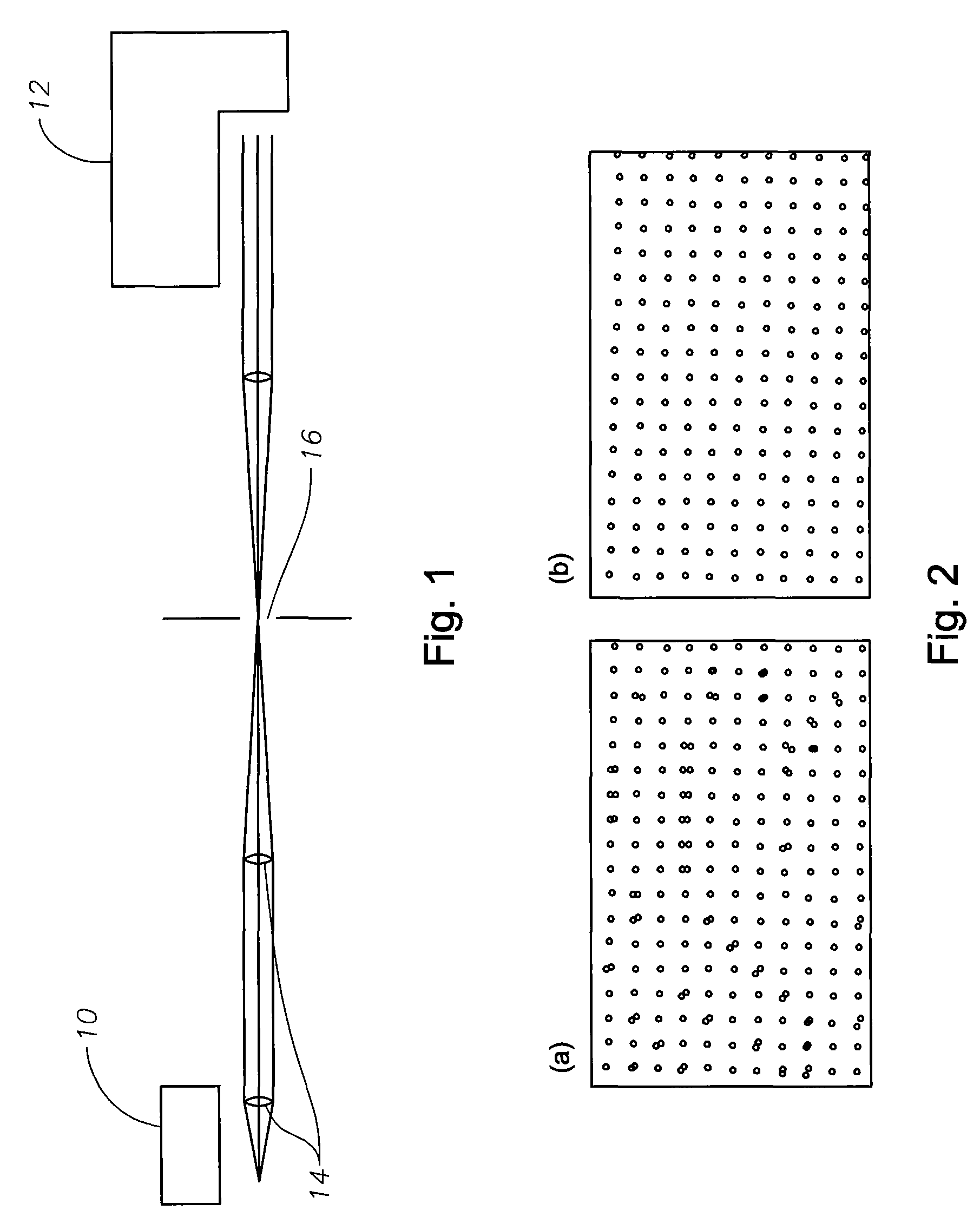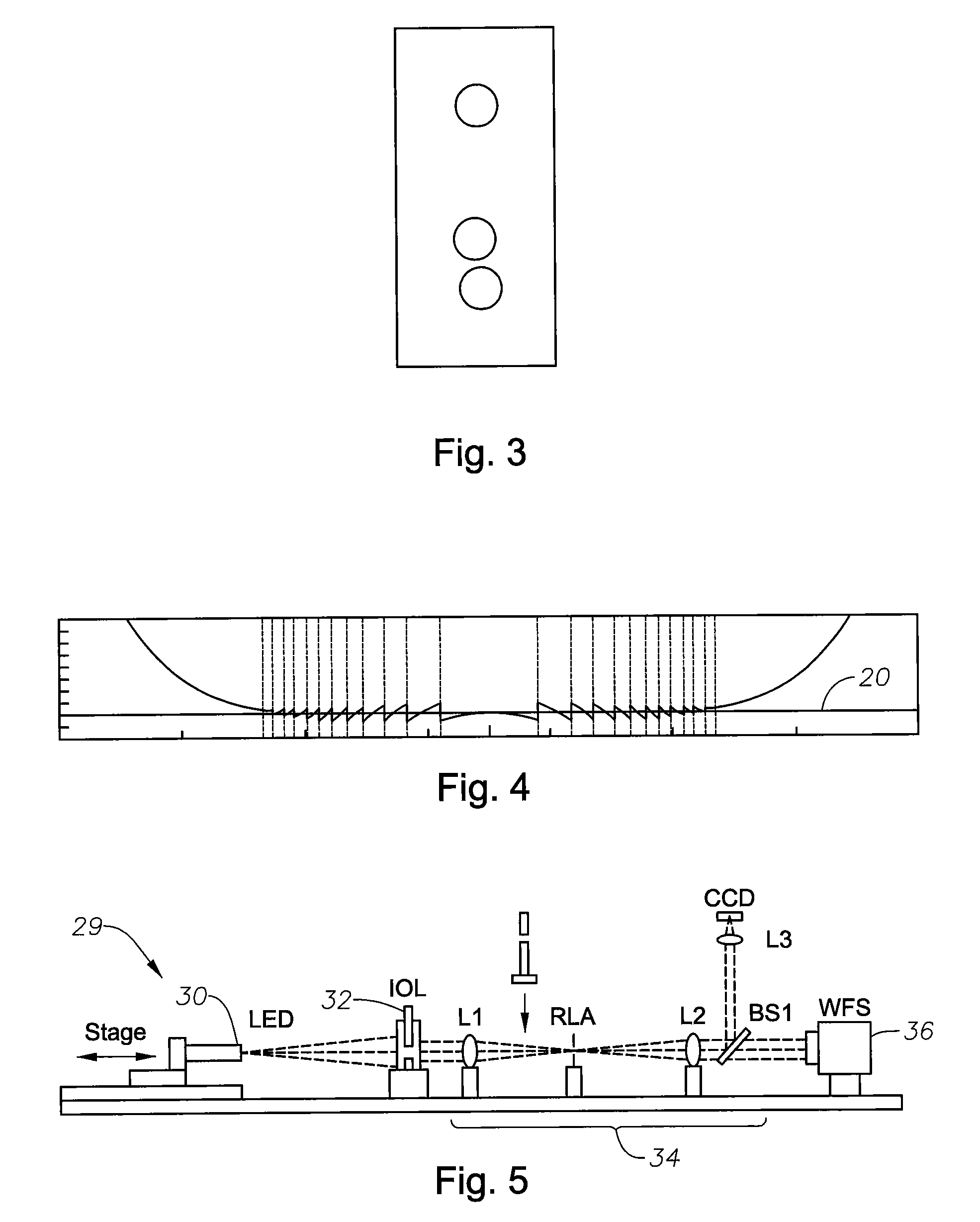Method of measuring diffractive lenses
a technology of diffractive lenses and optical properties, applied in the field of multi-focal diffractive ophthalmic lenses, to achieve the effect of high resolution and determination of overall optical properties of lenses
- Summary
- Abstract
- Description
- Claims
- Application Information
AI Technical Summary
Benefits of technology
Problems solved by technology
Method used
Image
Examples
Embodiment Construction
[0024]The embodiments of the present invention provide advantages over prior art lens measurement methods and systems in that wavefront measurements can provide information about the quality of an optical system at different locations across a lens. This information can be used to generate image quality parameters, such as modulation transfer function (“MTF”) or resolution, which describe properties that are useful in determining how an image might appear. The information is also of direct use for a lens manufacturer, or for anyone interested in improving an optical system composed of, for example, an eye and an intra-ocular lens (“IOL”), because it can be used to determine which regions of the IOL (lens) provide beneficial or detrimental contributions to optical performance of the system. For example, measurements of image quality can be used to indicate whether a lens is acceptable or unacceptable, but they do not evaluate the overall imaging characteristics of the lens. A wavefro...
PUM
 Login to View More
Login to View More Abstract
Description
Claims
Application Information
 Login to View More
Login to View More - R&D
- Intellectual Property
- Life Sciences
- Materials
- Tech Scout
- Unparalleled Data Quality
- Higher Quality Content
- 60% Fewer Hallucinations
Browse by: Latest US Patents, China's latest patents, Technical Efficacy Thesaurus, Application Domain, Technology Topic, Popular Technical Reports.
© 2025 PatSnap. All rights reserved.Legal|Privacy policy|Modern Slavery Act Transparency Statement|Sitemap|About US| Contact US: help@patsnap.com



